Related Research Articles

Crispino da Viterbo - born Pietro Fioretti - was an Italian Roman Catholic professed religious from Order of Friars Minor Capuchin. Fioretti was an ardent devotee of the Mother of God and was consecrated to her protection in 1674 and he even made a small altar dedicated to her when he served in the kitchens at the house in Orvieto. He served in various roles for the order in various cities around Rome where he became a well-known figure with various nobles and prelates - even Pope Clement XI visiting him and seeking him out for advice and support. Fioretti likewise was known as a sort of wonderworker who worked miracles during his lifetime. He was also known for his warm sense of humor and his simple method for living.
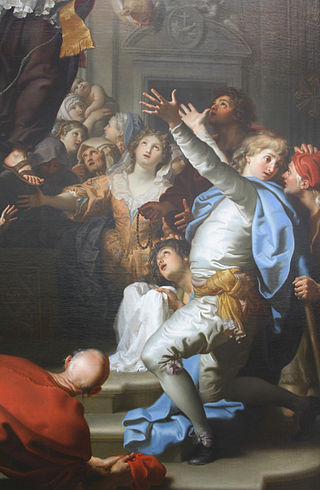
Tommaso da Cori - born Francesco Antonio Placidi - was an Italian Roman Catholic priest and a professed member of the Order of Friars Minor who lived as a hermit for much of his religious life. He gained fame as a noted preacher throughout the region where his hermitage was located and for this became known as the "Apostle of the Sublacense".

Szymon of Lipnica was a Polish catholic priest and a professed member from the Order of Friars Minor. He became a sought after and noted preacher and took as his preaching inspiration Saint Bernardine of Siena and also was a strong proponent of popular devotions that he worked to spread.
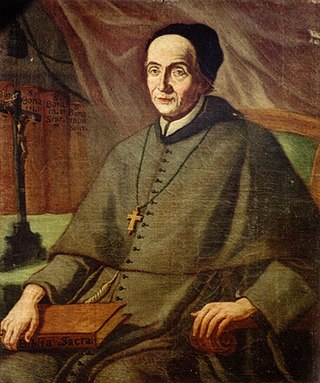
Antonio Lucci, born Angelo Nicola Lucci, was an Italian Roman Catholic professed member from the Order of Friars Minor Conventual and served as the Bishop of Bovino from 1729 until his death.

Esțfān Nehmé, born Yūsuf Nehmé, was a Lebanese Maronite professed religious from the Lebanese Maronite Order. Nehmé worked to alleviate people's pain during World War I through the distribution of food to those suffering from famine and was known for an intense devotion to the Mother of God. He worked in the fields of his convent and other monasteries and also worked in construction for a brief period, he became well known and other monasteries sought him to live with them for his spiritual insight and work ethic.

Maria Domenica Mantovani was an Italian Roman Catholic professed religious, and the co-founder of the Little Sisters of the Holy Family; she established them alongside Giuseppe Nascimbeni. As a nun she received the religious name of Maria of the Immaculate.

Claudio Granzotto was an Italian professed religious from the Order of Friars Minor and a noted sculptor. Granzotto's works were a conduit for his religious expression and are reflective of his dedication to use sculpting to evangelize to others.

Luigi Maria Monti, CFIC was an Italian Roman Catholic professed religious and the founder of the Sons of the Immaculate Conception.

Cristóbal of Saint Catherine – born Cristóbal López de Valladolid Orea – was a Roman Catholic Spanish priest and a professed member of the Third Order of Saint Francis. He was the founder of the Franciscan Hospitallers of Jesus of Nazareth which paid careful attention to both religious and social needs of the faithful.
Francesco Antonio Marcucci was a Roman Catholic Italian bishop and a member of the Secular Franciscan Order. Marcucci was also the founder of the Pious Workers of Mary Immaculate.
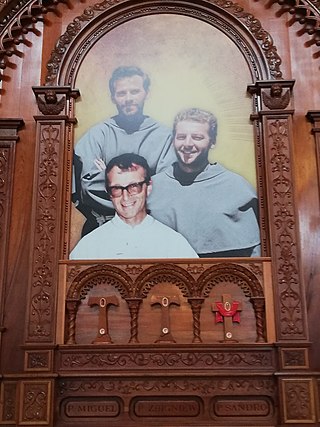
The Three Martyrs of Chimbote were a group of two Polish Franciscan priests and one Italian missionary priest murdered in Peru in 1991 by the Shining Path communist guerillas. Michał Tomaszek and Zbigniew Adam Strzałkowski, and Alessandro Dordi were murdered on 9 August and 25 August 1991 respectively.

Giacinto Bonaventura Longhin - in religious Andrea di Campodarsego - was an Italian Roman Catholic prelate and professed member from the Order of Friars Minor Capuchin who served as the Bishop of Treviso from 1904 until his death. Longhin held various roles of leadership within his order following his ordination such as acting as a teacher in Udine and acting as the Provincial Minister for his order. He became close friends with Giuseppe Melchiorre Sarto, Cardinal Patriarch of Venice. The latter became Pope Pius X in 1903 who made his old friend Longhin the new head for the vacant Treviso episcopal see.

Giuseppe Marcinò, religious name Innocenzo of Caltagirone, was an Italian priest and a member of the Capuchins. He was well known for his frequent and often sensational predications and miracles attributed to him since 1623. Due to this he was granted the moniker of "the miracle worker of the earth".

Giuseppe Nascimbeni was an Italian Roman Catholic priest who exercised his pastoral mission in his home of Verona and who also established the Little Sisters of the Holy Family.
Leopoldo da Gaiche, born Giovanni Croci, was an Italian Roman Catholic priest and a professed member of the Order of Friars Minor who became well known for wearing a crown of thorns. He was a preacher who went from diocese to diocese and served in a position of power in the Franciscan order in the Umbrian region in which he pushed for strong adherence to the Rule of Saint Francis of Assisi. He has been called the "Apostle of Umbria".

Josep Tous Soler was a Spanish Roman Catholic priest and a professed member of the Order of Friars Minor Capuchin - a branch of the Franciscan Order. Upon becoming a friar he was called by the religious name Josep of Igualada and went on to preach across both Spain and France.
Mariano da Roccacasale - born Domenico di Nicolantonio - was an Italian Roman Catholic professed religious from the Order of Friars Minor. He was of peasant stock and entered the order in his twenties as a professed religious rather than as an ordained priest. He was an influence in the decision of Giuseppe Oddi joining the Franciscans after their 1863 encounter.
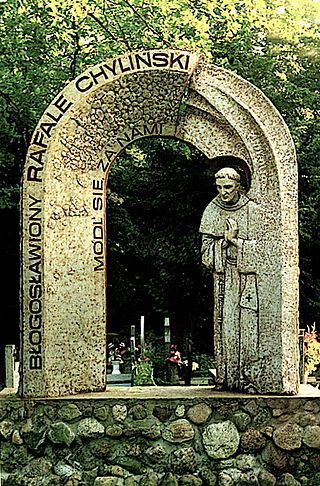
Melchor Chyliński - in religious Rafał - was a Polish Roman Catholic priest and a professed member from the Order of Friars Minor Conventual. He first served as a soldier but decided to instead become a priest and so entered the Franciscans and made his profession prior to ordination. He also became known for his simplistic preaching and for his generous outreach to the poor through the distribution of clothing and food.
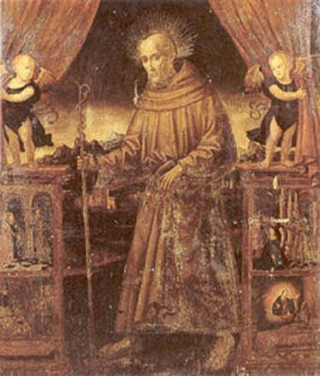
Gerardo Cagnoli was an Italian Roman Catholic and professed religious from the Order of Friars Minor. He embarked on a long pilgrimage south where he passed through Rome and Naples before settling in Trapani and then on the slopes of Mount Etna for a long hermitage. He later entered the Franciscans and served in two of their Sicilian convents where he was known for having caused miracles in addition to his humble and simple childlike nature which people believed was one of the signs of his holiness.
Giuseppe Beschin - in religion Ignazio - was an Italian Roman Catholic priest and professed member from the Order of Friars Minor. He studied in northern Italian cities for the priesthood while he did his Franciscan formation before serving as a professor in Rome in addition to holding several other important positions. Beschin was noted for his spiritual direction and for having been a good confessor while he spent most of his career spearheading efforts for the beatification cause of Bernardino da Portogruaro. Beschin also had served in several leadership roles during his time as a priest that saw him move often from the north to Rome.
References
- 1 2 3 4 "Blessed Diego Oddi". Saints SQPN. 10 April 2015. Retrieved 19 March 2016.
- 1 2 3 "Bl. Diego Oddi". Catholic Online. Retrieved 19 March 2016.